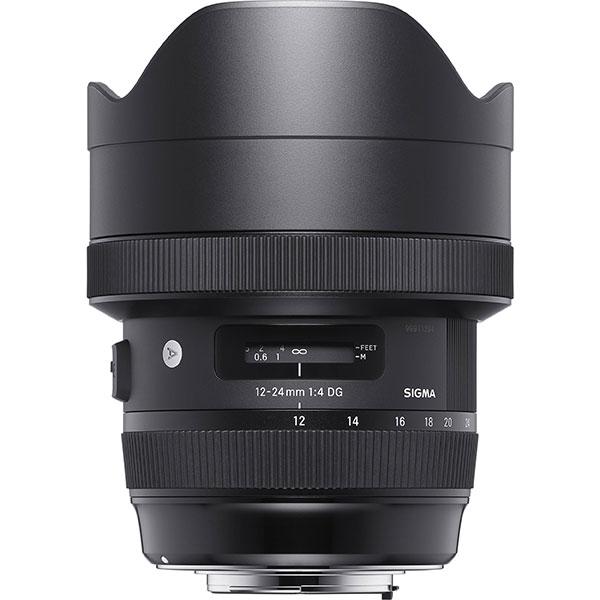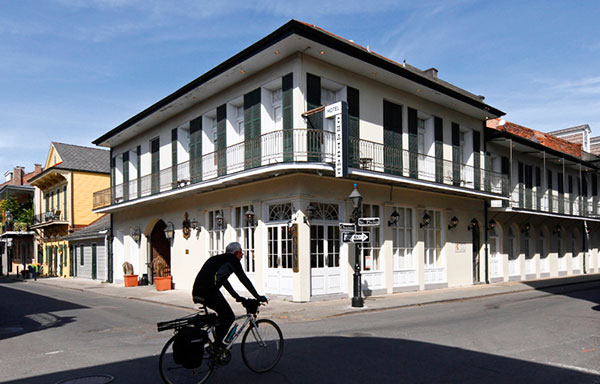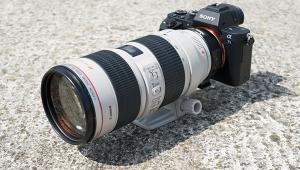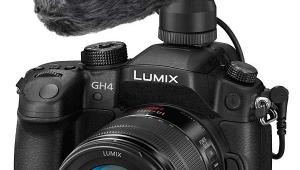Sigma’s New 12-24mm F/4 DG HSM Art Lens: This Zoom Takes Ultra-Wide Photography to a New Level

(Editor's Note: This piece is a Sigma Advertorial.)
Every photographer has a favorite lens, depending upon the type of photography they enjoy most. For some, it may be a super telephoto zoom, like the powerful new Sigma 150-600mm Sports lens we reviewed recently. For others, it might be a high-speed prime. But what really gets my creative juices flowing are the creative opportunities unlocked by an ultra-wide lens like the new Sigma 12-24mm DG f/4 HSM zoom.
Sigma has long been a pioneer in high-quality ultra-wide zooms ever since their introduction of a 21-35mm f/3.5-4.0 back in 1979. Since then, they’ve kept innovating with a succession of three great lenses in the 12-24mm category; the first for full-frame DLSRs in 2003, an updated version in 2011, and the new lens we are reviewing here. Unlike Sigma’s first two ultra-wide lenses with this focal length, which were both variable aperture lenses with f/3.5-5.6 maximum apertures, the new 12-24mm DG HSM Art lens boasts a constant f/4 maximum aperture throughout its zoom range.
I’m been enamored with ultra-wide zooms ever since I bought the Sigma 15-30mm f/3.5–4.5 DG EX back in 2006 that I’m still using today. Lenses like this deliver really dramatic results for everything from landscape photography and architecture to group portraits, cramped interiors, and bustling street scene. In fact, Sigma’s new 12-24mm f/4 is about as wide as you can go with a rectilinear lens without getting into the realm of fisheye lenses and their inherent compositional limitations and distortion.

When Sigma embarked on their latest iteration of the popular 12-24mm focal length for full-frame cameras, they did so with the goal of utilizing their latest technologies to minimize distortion, maximize edge-to-edge sharpness, and boost autofocus performance—all with a lens that meets the high standards of their respected Global Vision line. Have they succeeded? Well, let’s just say that after one afternoon with the new 12-24mm f/4 I’m ready to retire my trusty 15-30mm that has served me so well.
Optical Quality
All lens designs involve compromises, whether it’s performance versus the size and weight of a telephoto lens, or the vignetting and corner sharpness that typically is found with ultra-wide lenses when they’re used at maximum aperture. To address the latter when creating the new 12-24mm DG HSM Art lens, Sigma’s designers and optical engineers employed 16 elements in 11 groups, with state-of-the-art precision glass molding techniques, special FLD Low Dispersion glass, and multiple aspherical elements including an 80mm molded aspherical element that is the largest in any lens in this category.
As a result, the 12-24mm f/4 DG HSM Art lens delivers outstanding sharpness, color rendition and contrast throughout its zoom range, and is remarkably distortion-free—especially for an ultra-wide zoom.

Other Key Features
Because of the great depth of field inherent to ultra-wide lenses, precision autofocus isn’t as quite as critical as it is with lenses of greater magnification. However, the AF system in Sigma’s new 12-24mm DG HSM Art lens really delivers when you need it—thanks, in part, to a newly-designed Hyper Sonic Motor (HSM) that offers far greater torque than its predecessor. Not only is focus acquisition nearly instantaneous, but it’s virtually silent as well.

The lens boasts a smooth, internal focusing system with full-time manual focusing for making critical adjustments to your preferred point of focus. Minimum focusing distance with this lens is just a hair under 9.5 inches.
This brings us to one key consideration when shooting with ultra-wide lenses. Since background subjects tend to recede into the distance, it’s often important to compose your scene with a strong foreground object for greater impact. This could be something as simple as a large bolder or tree in a landscape photo, a doorway in a street scene, or an overhead bridge in a cityscape.
Ideal for outdoor use, the new Sigma 12-24mm f/4 features a dust-proof and splash-proof lens mount to guard against the elements, and the front and rear elements utilize a water- and oil-repellant coating.
For added reliability and longevity, the internal mechanism of the 12-24mm f/4 uses metal and Thermally Stable Composite materials that contribute to both durability and precision. The lens measures 4.0x5.2 inches, weighs 40.6 ounces, and is available in mounts for Sigma, Canon and Nikon DSLRs. With APS-C sensor cameras like the Canon 7D I used for the images you see here, the focal length is equivalent to 19-38mm in the 35mm format.
Bottom Line
I’m very fond of my Sigma 15-30mm ultra-wide zoom, but this new 12-24mm DG f/4 HSM Art lens beats it in every way. Focusing is faster and more precise, optical quality is superior throughout the zoom range, and distortion is virtually absent. And if you appreciate fine build quality and industrial design, this lens definitely deserves your consideration. At $1,599, it delivers a whole lot for the money.

As a bonus for those who use multiple camera systems, the new 12-24mm is compatible with Sigma’s MC-11 Mount Converter that let’s you use Sigma SA-mount and Canon EOS-mount lenses with Sony E-mount cameras.
So how much do I love the lens? Well, here’s a brief explanation: While shooting along the New Orleans riverfront beneath the bridge that crosses the Mississippi River, I broke through a rotten board on the wharf. Before I knew it, I was dangling upside down by my ankle in a rather precarious position to say the least. But rather than use both hands to break the fall, instinctively I found myself holding my camera and lens high overhead to prevent damage.
As a result, two weeks have passed and while I’m still hobbling around on a badly damaged ankle and knee (and my camera is slightly scarred), I’m proud to say that the Sigma 12-24mm DG f/4 HSM Art lens remains in pristine condition. It’s all about priorities!
- Log in or register to post comments









































